 |
|||||||||||||||
— The Flight and the Accident — |
||
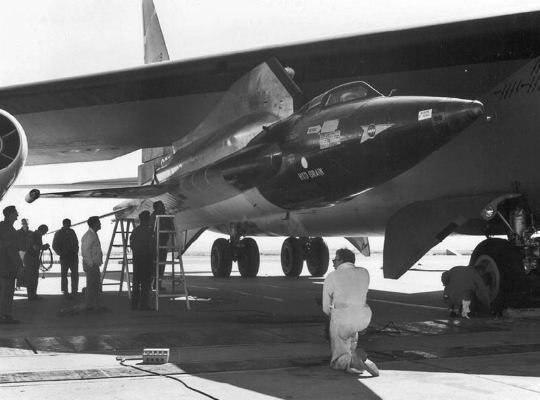 |
 |
|||
Mike Adams sealed in the cockpit of X-15 no. 3, ready for flight 3-65-97 on the morning of 15 Nov. 1967. Armstrong Flight Research Center |
||||
B-52 no. 008 with Col. Joseph Cotton and Sq. Ldr. John Miller at the controls, lifts off the Edwards runway at 09:13, heading to the Delamar Dry Lake launch zone. Armstrong Flight Research Center |
||||
 |
||||
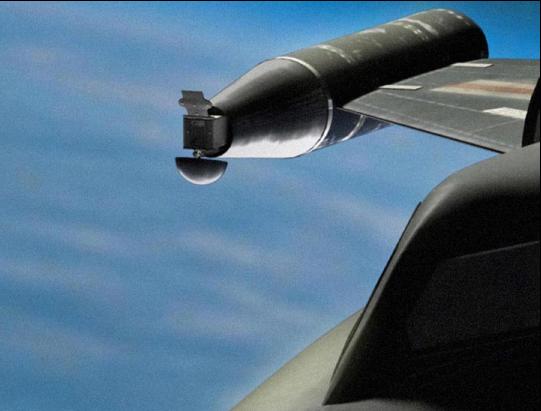 |
||||
Adams launched at 10:30:07 and headed upward at Mach 5.20 (3,570 mph) Electrical arcing occurred in an experiment in the left wing tip pod. artwork by Thommy Eriksson, modified by Michelle Evans |
Because of the constant computer resets, caused by the electrical arcing, Adams became distracted and misread an indicator which could display either Yaw or Roll. Armstrong Flight Research Center modified by Michelle Evans |
|||
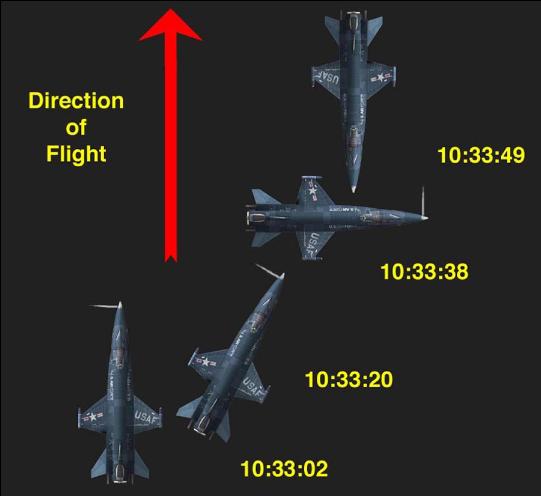 |
||||
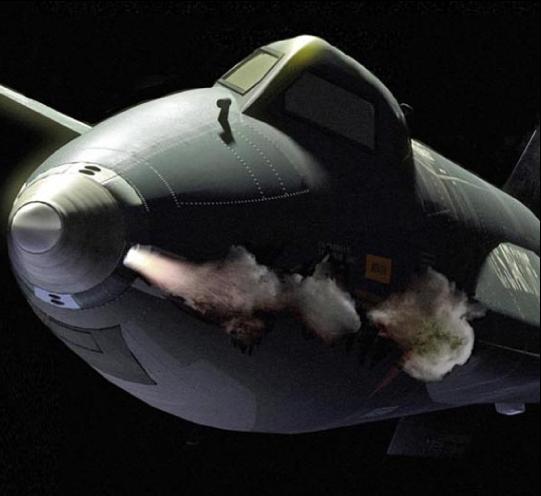 |
||||
Mike fired thrusters to continue to adjust for Roll, but was actually changing Yaw. artwork by Thommy Eriksson, modified by Michelle Evans |
In 47 seconds, Adams changed the X-15 attitude so it was pointing backward. artwork by Thommy Eriksson, modified by Michelle Evans |
|||
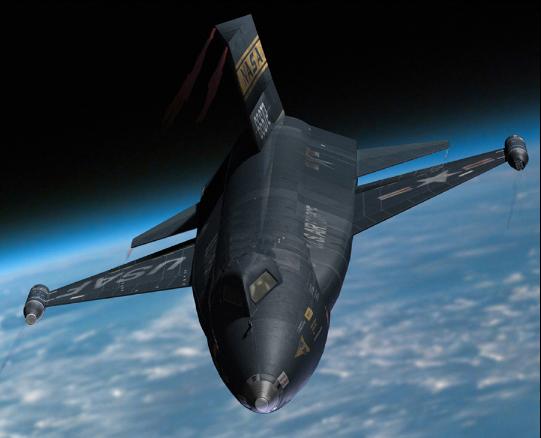 |
 |
|||
Re-entering from 266,000 feet, the X-15 was heading tail first into its flight path. artwork by Thommy Eriksson, modified by Michelle Evans |
||||
The X-15 entered a hypersonic spin. Adams was knocked out by the g forces. artwork by Thommy Eriksson |
||||
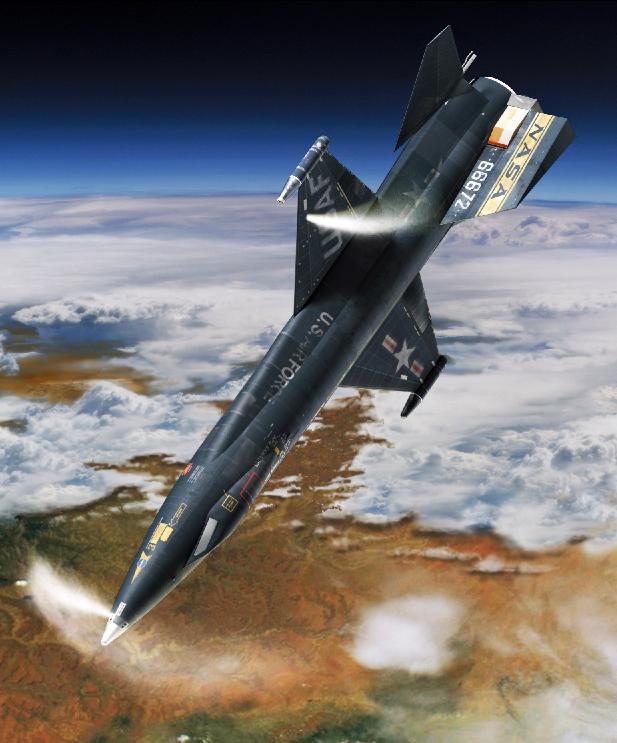 |
||||
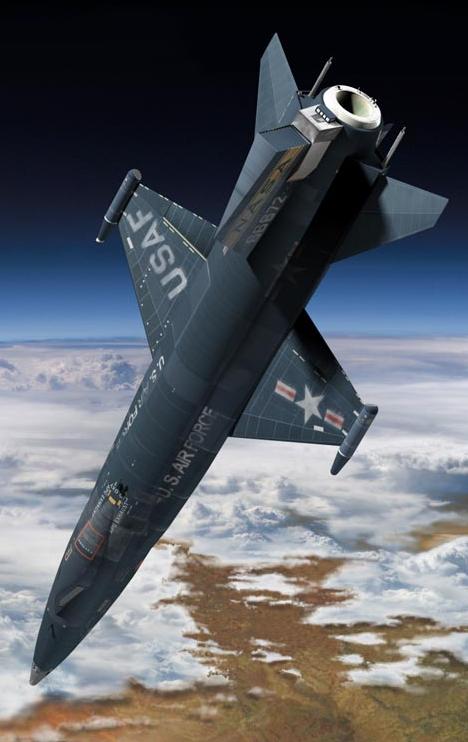 |
||||
X-15 artwork by Thommy Eriksson. Background by Robert Kline |
||
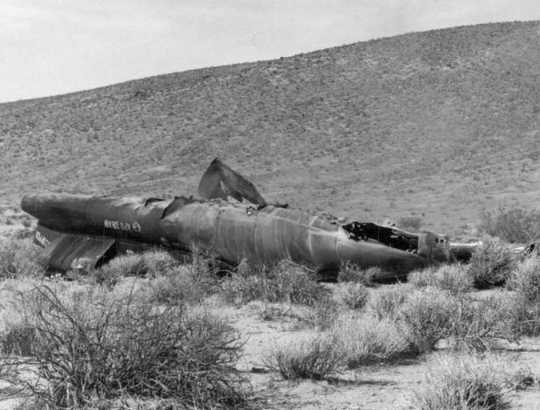 |
||||
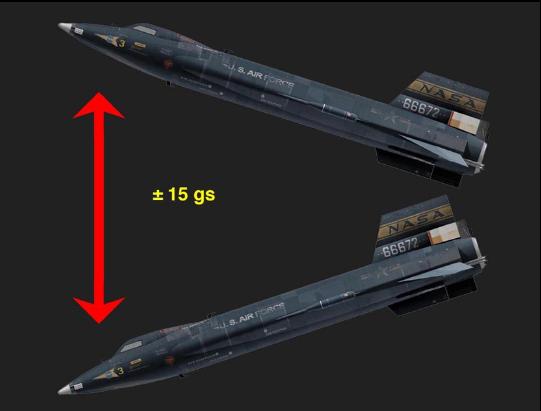 |
||||
Coming out of the spin, Adams regained consciousness, but created a pilot-induced ocsillation exceeding structural limits, breaking the aircraft apart at 62,000 feet. artwork by Thommy Eriksson, modified by Michelle Evans |
The forward fuselage, with Michael Adams still in the cockpit, impacted the desert at 10:34:58. Other parts of the X-15 landed along a roughly 10 mile track to the northeast. Armstrong Flight Research Center |
|||
— The Crash Site and Investigation — |
||
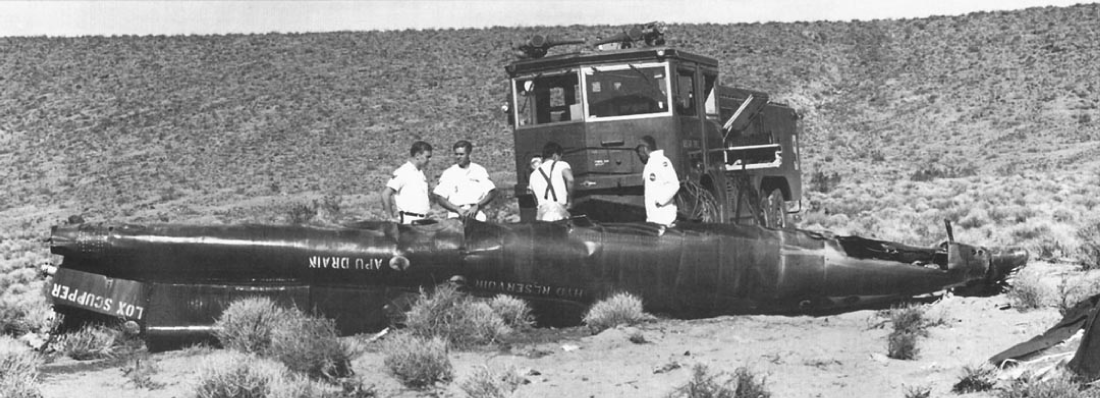 |
||
The left underside of the forward fuselage. Note the nose wheel well to the right. Armstrong Flight Research Center |
||
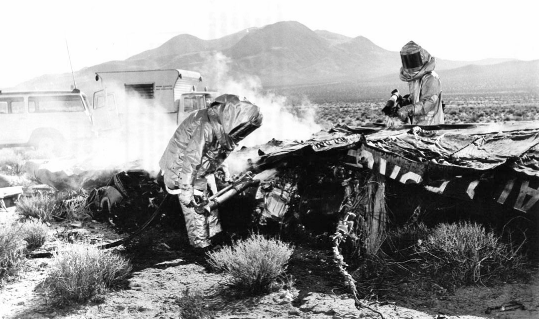 |
 |
||||
Firefighters check the still smouldering wreckage. NASA Headquarters |
|||||
 |
|||||
The forward fuselage soon after crews arrived. The cockpit is at center right. Armstrong Flight Research Center |
|||||
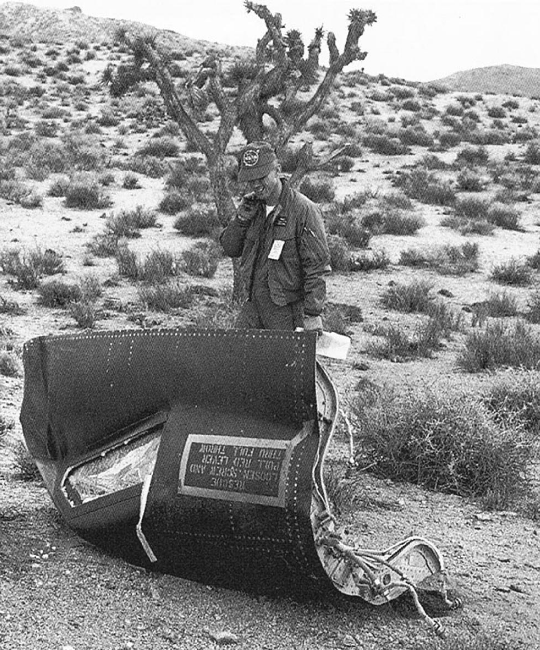 |
|||||
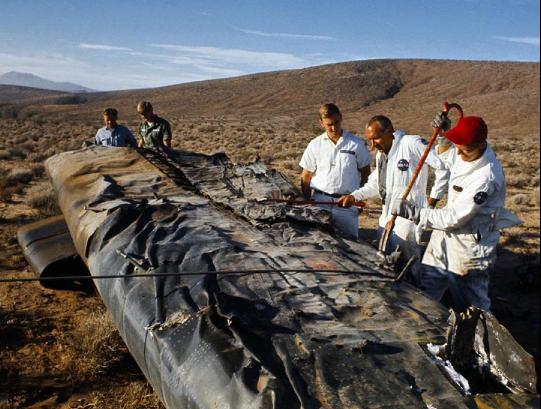 |
|||||
Investigators start their examination into the cause of the tragic accident. Note that this is the only known color photograph of the crash scene. author's collection |
|||||
The cockpit canopy of X-15 no. 3 was found farther back along the flight track. author's collection |
|||||
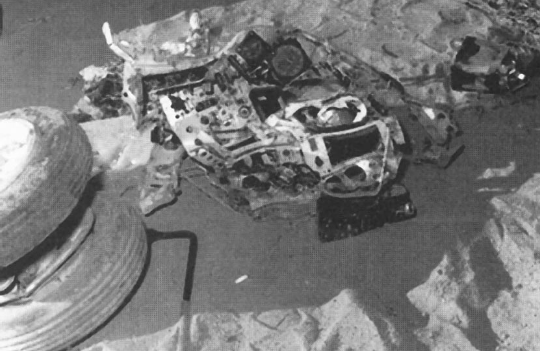 |
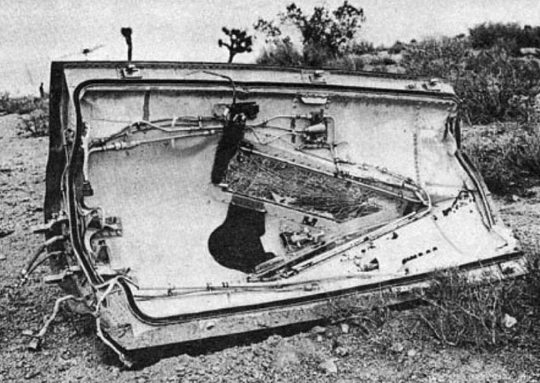 |
||||
The nose wheel and mangled cockpit instrument panel. Armstrong Flight Research Center |
|||||
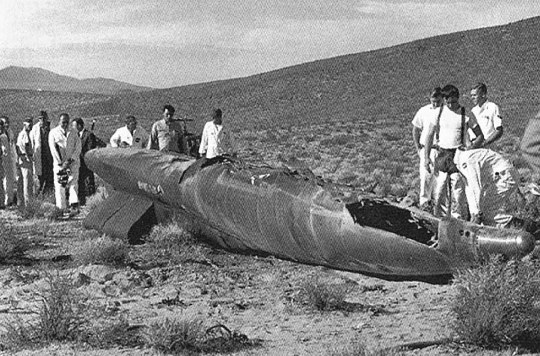 |
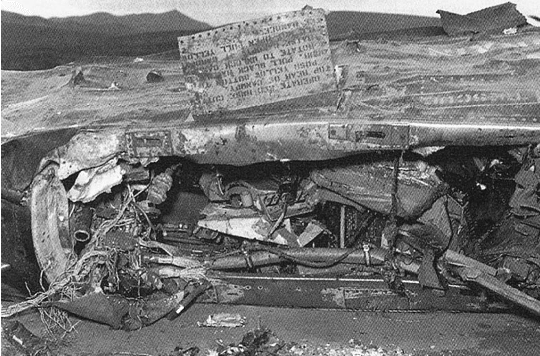 |
|||
View of the forward fuselage of X-15 no. 3. Note the nose wheel well and Q-ball. Armstrong Flight Research Center |
Cockpit of X-15 no. 3 after the accident. Armstrong Flight Research Center |
|||
 |
 |
|||
Milt Thompson (second from right, with NASA jacket) at the crash site of X-15 no. 3. NASA Headquarters |
Aerial view of forward fuselage. Note the nose wheel and other scattered wreckage. Armstrong Flight Research Center |
|||
 |
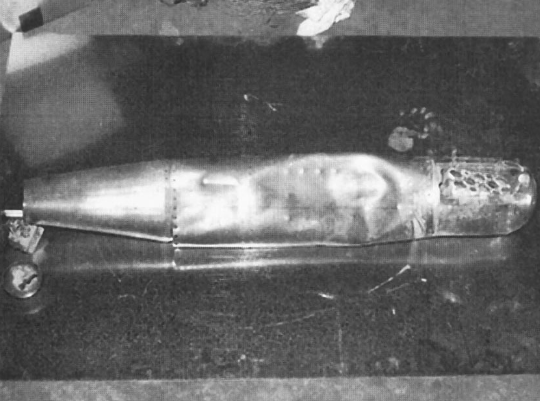 |
|||
View of the rear fuselage of X-15 no. 3. Armstrong Flight Research Center |
The left wing tip pod with the experiment that caused the electrical arcing. Armstrong Flight Research Center |
|||
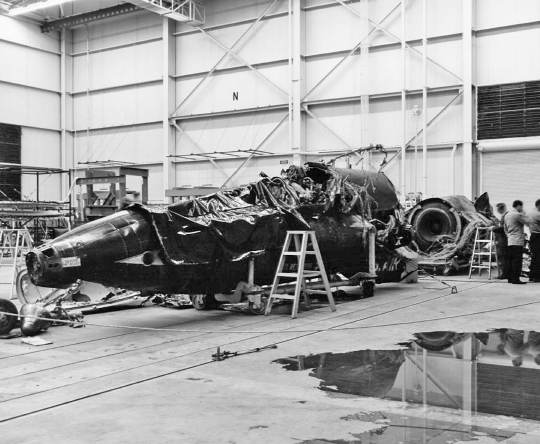 |
 |
|||
Reconstruction of X-15 no. 3 in Building 4820 at Edwards AFB on 22 Nov. 1967. Armstrong Flight Research Center |
||
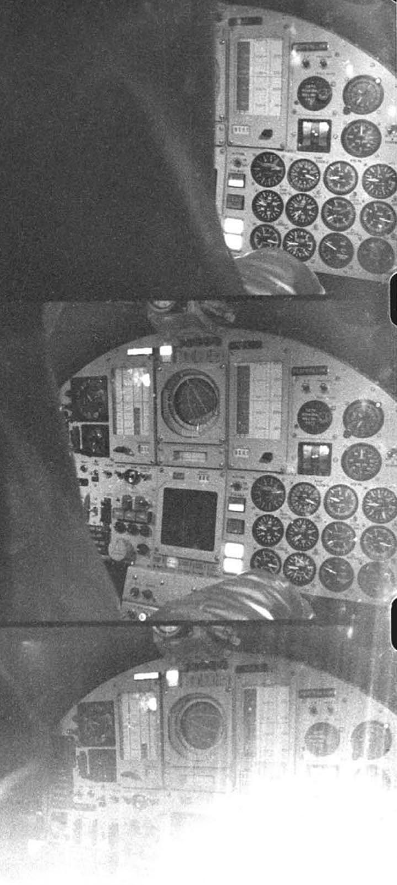 |
|||||||||
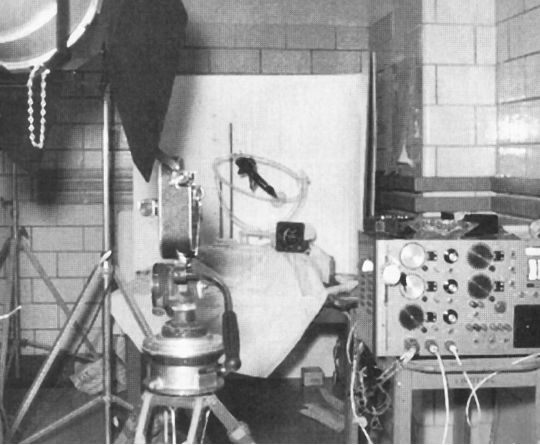 |
|||||||||
Frame 827 10:34:54 PST |
|||||||||
Frame 828 10:34:54.4 |
|||||||||
A model was used to create a stop-motion film of the flight events: 22 Dec. 1967. Armstrong Flight Research Center |
|||||||||
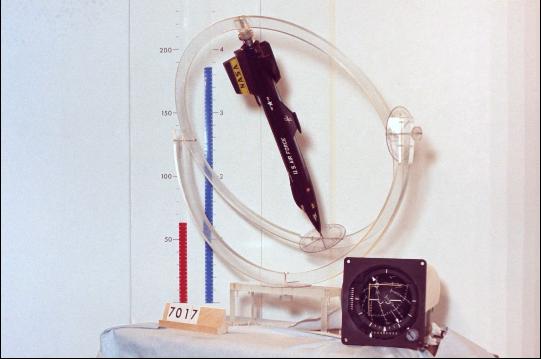 |
|||||||||
Frame 829 10:34:54.8 |
|||||||||
Last three frames of the film from the recovered cockpit camera. Armstrong Flight Research Center |
||
— The Major Michael Adams Memorial — |
||
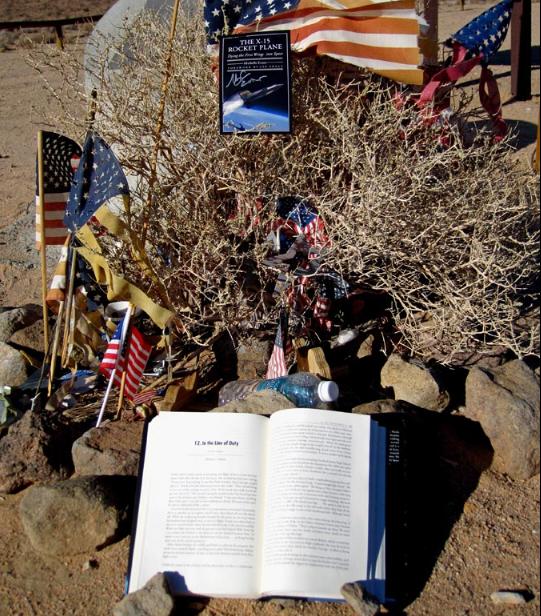 |
 |
|||
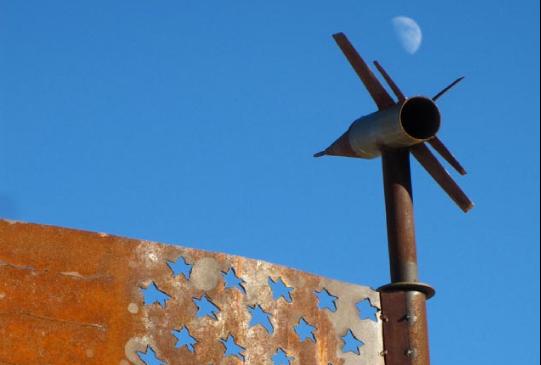 |
||||
"The X-15 Rocket Plane, Flying the First Wings into Space" open to Chapter 12 "In the Line of Duty" at the Adams Memorial. photo by Robert Kline |
The overall Adams Memorial site, and a close-up of the metal flagpole with the Moon. photos by Robert Kline |
|||
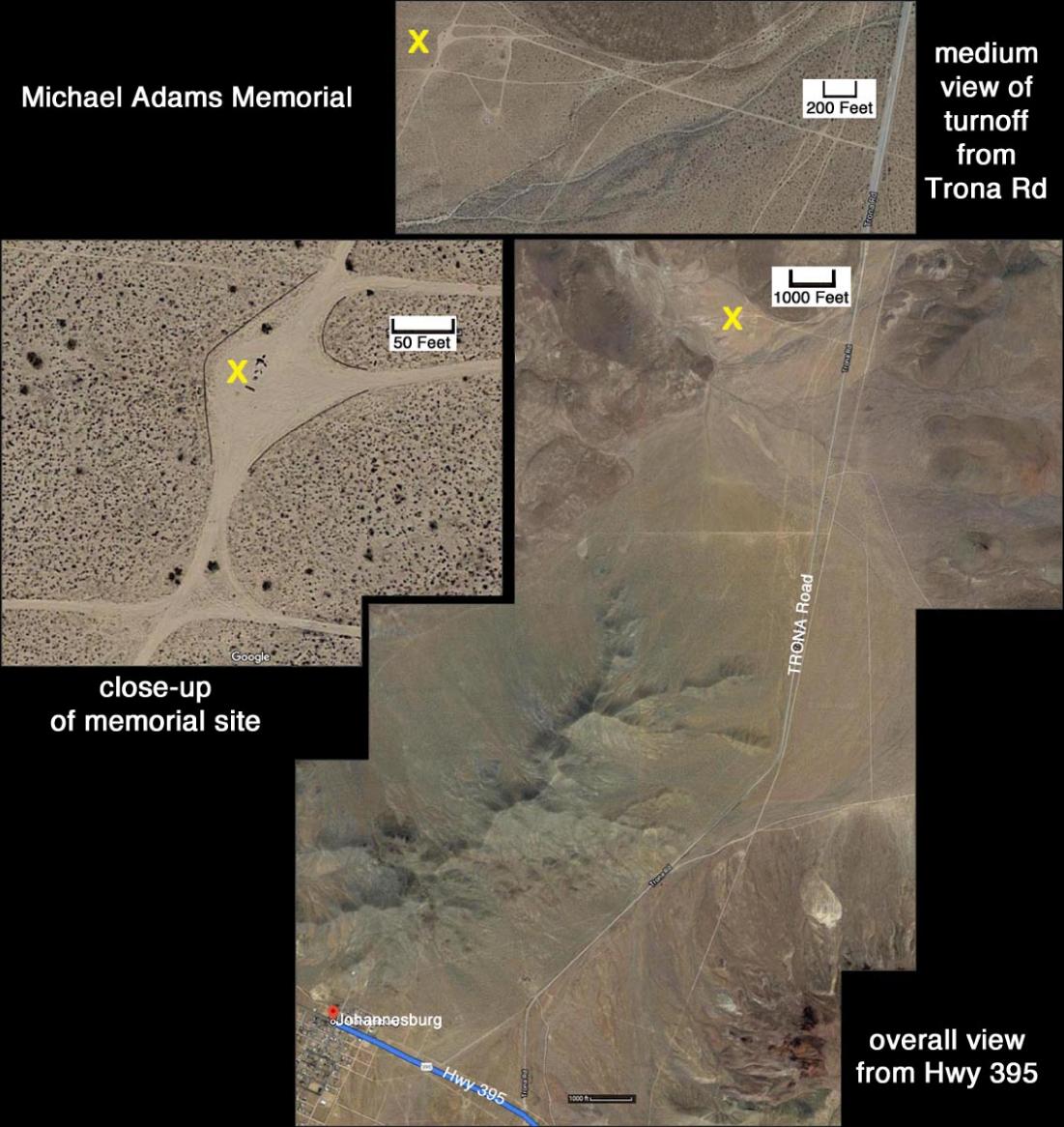 |
||
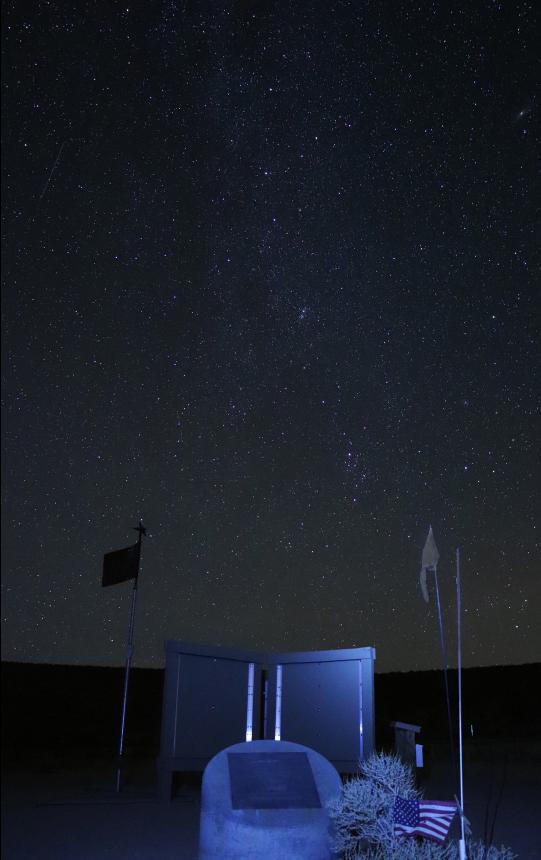 |
 |
|||
Beautiful photos of the Michael Adams Memorial Site at night. photos by Robert Kline |
||